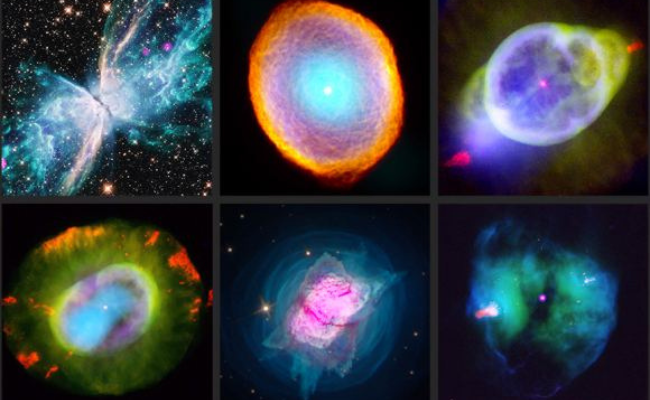Jaw-Dropping Images of Planetary Nebulae Reveal Their Unbelievable Beauty and Diversity
Gazing up the sky, the sight only often seen are the stars that dot the vast darkness. Thanks to the latest technology advancements, jaw-dropping photos of the candy-like planetary nebulae have been released.
These images revealed a nebula’s incredible beauty and diversity that the naked eye can’t see. The awe-inspiring pictures are proof of the extraordinary wonder and power of the universe. It will undoubtedly leave viewers breathless.
The Captivating Beauty of Planetary Nebulae
Planetary Nebulae (PNe) are well-known for their unique forms and eye-catching colors. A new study examines why these space objects are so special, making their formations incredibly stunning.
The research titled “Emerging planetary nebulae within 3D spiral patterns” explores the role that binary matches role in forming a nebula. It also focused on the effect that flying jets may have on their shapes.
In the 2023 ESA Hubble and Webb calendar, the month of May features two Webb views of the planetary nebula NGC 3132, also known as the Southern Ring.
Ready to print .pdf here: https://t.co/5RnOl45aGD
📷 @NASA @esa @csa_asc & @stsci pic.twitter.com/hwgHng4uhs
— ESA Webb Telescope (@ESA_Webb) May 2, 2023
The images still display the complexity of these space objects even if the colorful photos we see on the web are not precisely what a human could see. PNe comes from massive red stars that emit gases into space.
As these gases absorb UV radiation from the remaining white dwarf, they shed it in various wavelengths. Thus, it creates an emission of a nebula.
You may also like: NASA Reveals Incredible Footage of Mars Helicopter Soaring Over Alien Landscape
Most stars in the Milky Way have double combinations. These matches can play a role in shaping the nebula. This new study examines how the orbital time of the binary companion affects the spirals that build within the still-forming PNe.
The study’s results also show how the white dwarf’s jets can omit the spirals and shape of the object. In addition, the research clears the difference between the actual and expected number of ring-like structures in PNe.

Photo Credit: universetoday.com
Previous studies show that about 35% of PNe should have these designs. However, a 2016 research suggests that only 8% of them do. This new study shows that the low appearance of ring-like structures could be due to physical mechanisms omitting their marks.
The study used 3D radiation-hydrodynamic simulations to observe the formation of PNe. The simulations matched with previous research suggesting that the formation of a nebula can disappear fast due to the effects of the binary associate.
Veronica Lora, the research lead author from the Institute of Nuclear Science at the Universidad Nacional Autonomy de Mexico, noted that the study highlights the significance of understanding the role of binary associates in forming the planetary nebulae.
She explained that this knowledge could lead to more precise models of how these space objects form and evolve. While early astronomers may not have unveiled what planetary nebulae are, their distinct colors and shapes will captivate the imagination of the public and scientists up to this day.
Today Chandra is gazing at galaxies in Lyra. Nearby in the sky is M57, known as the Ring Nebula. The delicate, flower-shaped material surrounding the colorful center was expelled by the star during the early stages of planetary nebula formation. M57 is about 1 light-year across. pic.twitter.com/94FpUpOdjK
— Chandra Observatory (@chandraxray) April 28, 2023
Overall, this new study sheds light on the distinct shapes of a nebula and the factors that make them unique. The study highlighted the role of jets and binary companions in shaping these space objects.
This new knowledge can help scientists achieve more accurate details of how they form, making it a significant contribution to the field of astronomy.

